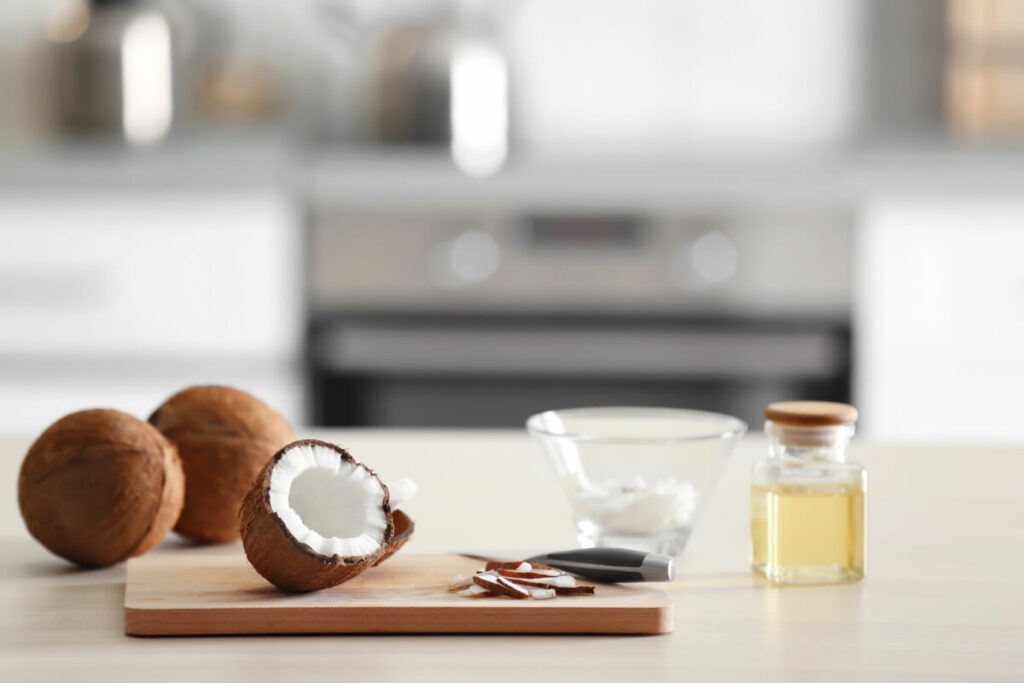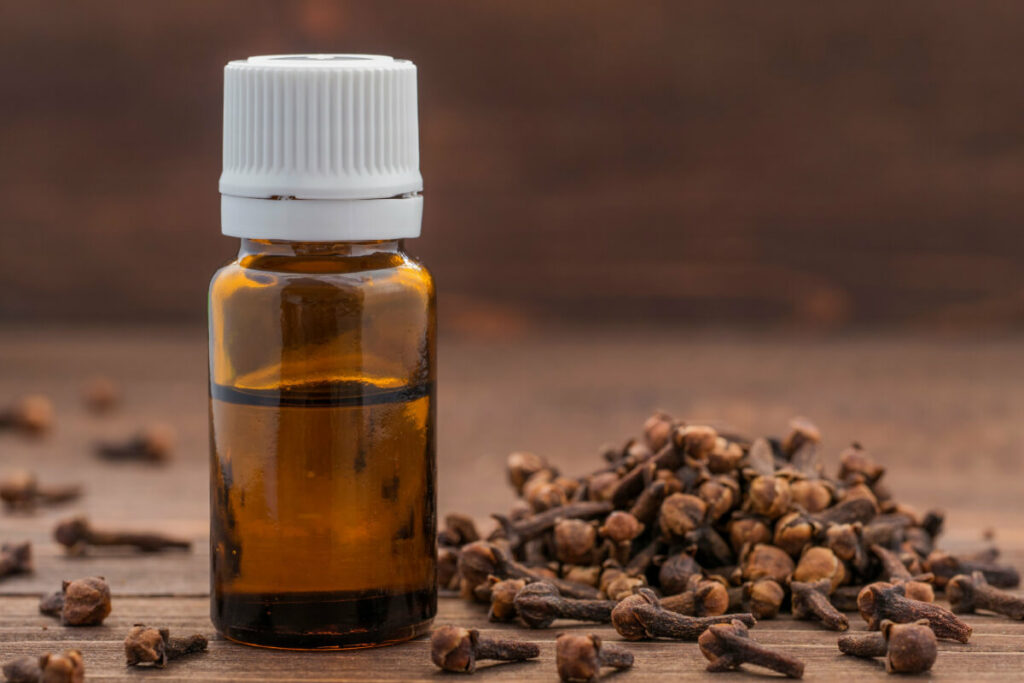Tooth sensitivity, also known as dentin hypersensitivity, is a common condition that arises when a sensitive tooth comes into contact with external factors, such as hot or cold drinks, toothbrushing, or chewy foods. Patients who struggle with sensitive teeth often describe the pain as recurring, short, and sharp. (12)
A study conducted in the United States saw that on average one in eight patients visited a dental practice because of sensitive teeth. Dentin hypersensitivity is often diagnosed by a dentist based on a patient’s self-reported discomfort and dental history. (8)

Why are my teeth sensitive?
Multiple risk factors can contribute to the development of sensitive areas on the teeth, such as tooth enamel loss, tooth erosion, and gum recession caused by gingivitis (gum disease). (8) The following can contribute to the above risk factors over time:
- Eating a diet rich in acidic foods and/or drinks (e.g., wine) (6)(15)
- Constantly or aggressively brushing your teeth (10)
- Frequently using whitening agents (11)
- Experiencing gastric reflux (4)
- Receiving scaling and root planning periodontal treatments (5)
Preventing sensitive teeth
Maintaining oral health and limiting the risk factors of tooth sensitivity can help keep pain away. The following recommendations may reduce the likelihood of dental disturbances:
- Book regular dental appointments
- Don’t use tobacco products
- Practice proper oral hygiene, including daily brushing (carefully) and flossing
- Reduce your intake of acidic foods and drinks (14)
- Rinse your mouth with salt water (2)
- Try oil pulling (3)
- Use a soft bristled toothbrush
- Use a desensitizing toothpaste designed for sensitive teeth (17)
Learn more about maintaining good oral health on the Fullscript blog.
How to stop tooth pain using natural remedies
If you do experience tooth sensitivity, some at-home remedies have been proven to aid tooth pain and sensitivity. (1)(3)(7) The following three remedies are both affordable and accessible to patients at home. That being said, these remedies don’t replace seeing a qualified dental practitioner if the pain persists. Here are the top three science-backed natural remedies to help stop tooth pain in its tracks.

1. Oil pulling
Oil pulling is an Ayurvedic technique that has been used for centuries for healing bleeding gums, preventing tooth decay, and strengthening teeth. It is typically done in the morning before brushing your teeth and involves swishing around a spoonful of oil repeatedly in your mouth for up to 20 minutes. Oil pulling traditionally uses sesame oil, although coconut oil is often used in its place. (3)
This Ayurvedic method for dental hygiene has been studied for its effectiveness. One study conducted on 20 adolescent boys struggling with gingivitis concluded that regular oil pulling with sesame oil could reduce gingival scores and plaque index as well as the amount of plaque-forming microorganisms that can cause oral sensitivity. (3) Another study looked at oil pulling with coconut oil specifically, finding that there was a significant decrease in markers associated with plaque and gingivitis. (16)
2. Salt water rinse
A simple home remedy of swishing a sea salt water solution could be another easy and accessible remedy to assist with dentin hypersensitivity. A study examined the effectiveness of salt water mouthwash after periodontal surgery and found that patients experienced significant anti-inflammatory effects, similar to those experienced with chlorhexidine, a rinse commonly used after dental procedures to reduce inflammation and pain. (7)
Salt water can also help reduce bacterial growth. A study comparing salt water with chlorhexidine concluded that when used in conjunction with routine brushing, it can help to control plaque and reduce the risk of oral diseases that can lead to sensitivity. (2) Together, these studies suggest that salt water mouthwash can be a gentle, effective, and cost-effective way to address dental pain and the inflammation associated with it.

3. Clove oil
Essential oils are composed of beneficial compounds that can aid in various conditions. (13) Clove oil is a dental remedy that has been used for thousands of years, specifically for tooth pain. A study that was done in 2006 compared clove oil with benzocaine, a topical anesthetic typically used during dental procedures. The research concluded that both benzocaine and clove oil reduced pain scores significantly when compared to the placebo group, suggesting clove oil can be used topically for dental relief. (1)
Another study assessed the antimicrobial activity of various plant-based remedies, including clove oil, cinnamon oil, and ginger, compared to conventional dental products. The researchers found that clove oil may be an effective natural ingredient for protecting the mouth against microorganisms that can lead to common oral diseases. (9)
The bottom line
Tooth sensitivity is a common, recurring condition that presents itself when a vulnerable tooth comes into contact with external factors, such as hot or cold drinks, toothbrushing, or chewy foods. (12) Thankfully, three simple natural practices may help to address tooth sensitivity when it arises. Oil pulling, salt water rinses, and clove oil may help treat some of the underlying risk factors of tooth sensitivity.
To learn more about how to prevent sensitive teeth and how to maintain healthy teeth, talk to your dentist.
- Alqareer, A., Alyahya, A., & Andersson, L. (2006). The effect of clove and benzocaine versus placebo as topical anesthetics. Journal of Dentistry, 34(10), 747–750.
- Aravinth, V., Aswath Narayanan, M., Ramesh Kumar, S., Selvamary, A., & Sujatha, A. (2017). Comparative evaluation of salt water rinse with chlorhexidine against oral microbes: A school-based randomized controlled trial. Journal of Indian Society of Pedodontics and Preventive Dentistry, 35(4), 319.
- Asokan, S., Emmadi, P., Chamundeswari, R. Effect of oil pulling on plaque induced gingivitis: A randomized, controlled, triple-blind study. (2009). Indian J Dent Res.
- Bartlett, D. W., Evans, D. F., Anggiansah, A., & Smith, B. G. (1996). A study of the association between gastro-oesophageal reflux and palatal dental erosion. British Dental Journal, 181(4), 125–131.
- Chabanski, M. B., Gillam, D. G., Bulman, J. S., & Newman, H. N. (1997). Clinical evaluation of cervical dentine sensitivity in a population of patients referred to a specialist periodontology department: a pilot study. Journal of oral rehabilitation, 24(9), 666–672.
- Chikte, U. M., Naidoo, S., Kolze, T. J., & Grobler, S. R. (2005). Patterns of tooth surface loss among winemakers. SADJ: Journal of the South African Dental Association. 60(9), 370–374.
- Collins, J. R., Veras, K., Hernández, M., Hou, W., Hong, H., & Romanos, G. E. (2021). Anti-inflammatory effect of salt water and chlorhexidine 0.12% mouthrinse after periodontal surgery: a randomized prospective clinical study. Clinical Oral Investigations, 25(7), 4349–4357.
- Cunha-Cruz, J., Wataha, J. C., Heaton, L. J., Rothen, M., Sobieraj, M., Scott, J., & Berg, J. (2013). The prevalence of dentin hypersensitivity in general dental practices in the northwest United States. The Journal of the American Dental Association, 144(3), 288–296.
- Kanth, M. R. (2016). Efficacy of specific plant products on dental caries causing microorganisms. Journal of Clinical and Diagnostic Research.
- Khocht, A., Simon, G., Person, P., & Denepitiya, J. L. (1993). Gingival recession in relation to history of hard toothbrush use. Journal of Periodontology, 64(9), 900–905.
- Leonard, R. H., Jr, Haywood, V. B., & Phillips, C. (1997). Risk factors for developing tooth sensitivity and gingival irritation associated with nightguard vital bleaching. Quintessence international (Berlin, Germany : 1985), 28(8), 527–534.
- Markowitz, K., & Pashley, D. H. (2008). Discovering new treatments for sensitive teeth: The long path from biology to therapy. Journal of Oral Rehabilitation, 35(4), 300–315.
- Moon, S. E., Kim, H. Y., & Cha, J. D. (2011). Synergistic effect between clove oil and its major compounds and antibiotics against oral bacteria. Archives of Oral Biology, 56(9), 907–916.
- National Institute on Aging. (2020). Taking care of your teeth and mouth. https://www.nia.nih.gov/health/taking-care-your-teeth-and-mouth
- O’Sullivan, E. A., & Curzon, M. E. (2000). A comparison of acidic dietary factors in children with and without dental erosion. ASDC Journal of Dentistry for Children.
- Peedikayil, F., Sreenivasan, P., & Narayanan, A. (2015). Effect of coconut oil in plaque related gingivitis – A preliminary report. Nigerian Medical Journal, 56(2), 143.
- Victoria Department of Health. (2022). Dental erosion. Better Health Channel. https://www.betterhealth.vic.gov.au/health/conditionsandtreatments/dental-erosion





